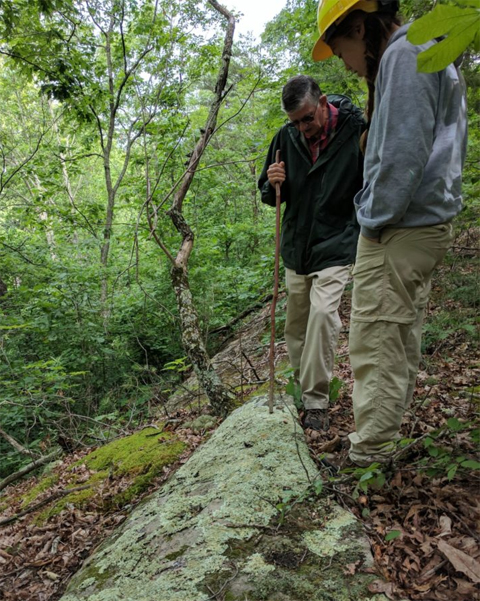
Ray Showman and Emily Penn observing lichens on a rock.
By Trevor Somogyi ’18 and Emily Penn ’18
Hello!
This is the first of many blog posts written by the botany interns that aims to inform the public on all the cool things we’re doing during our summer at the Wayne National Forest.
First, a little background on our internship with the U.S. Forest Service: Our goal is to survey every inch of the proposed 30 miles of mountain bike trails in search of designated RFSS (Regional Forester Sensitive Species) as well as documenting the extent of NNIS (Non-Native Invasive Species). By doing this, we’re making sure the creation of these trails do not interfere with or destroy some of the rare species that occur on certain parts of the WNF.
Now that you know a little bit about our day-to-day job, we’d like to share with you a special opportunity we had to meet some of the leading experts on lichens and bryophytes. This is one of our favorite aspects of our internship at the WNF because aside from our survey work, we have had several opportunities to bolster our knowledge in the field of botany. We spent the day at the Ironton section of the Wayne with Barb Andreas and Ray Showman, both members of the Ohio Moss and Lichen Association, looking at the stunning diversity in the area.
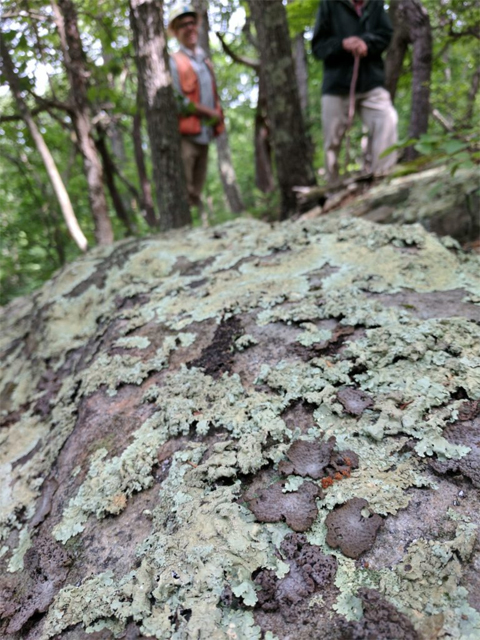
An assortment of lichens.
The unassuming lichen is actually a quite interesting organism. The result of a symbiotic relationship between algae or cyanobacteria with fungus, the lichen can take on several growth forms; jutting out from the rock (fruticose), flat leaf-like structures (foliose) and flakes that lie on the surface (crustose). These composite organisms are capable of growing in some of the most extreme environmental conditions including the arctic tundra, where it is one of the only vegetative food sources for other organisms.
Pictured above are just a fraction of the many lichens we got to see that day. The top photo is a rock absolutely covered in the rock green shield lichen (Flavoparmelia caperata). Just above, while also containing more of the common green shield, is a crowd favorite; the aptly named toad skin lichen (Lasallia papulosa).
Moss identification is a bit harder than identifying lichens because many of the specimens require at least a dissecting scope if not a microscope to accurately key out. While searching for moss with Barb at a damp, rocky outcrop, we stumbled upon the full nest of an eastern phoebe bird (Sayornis phoebe). Barb then told us a little bit about her research studying humming birds and how they use certain types of mosses to build their nests at rocky outcrops similar to the one this phoebe bird used.
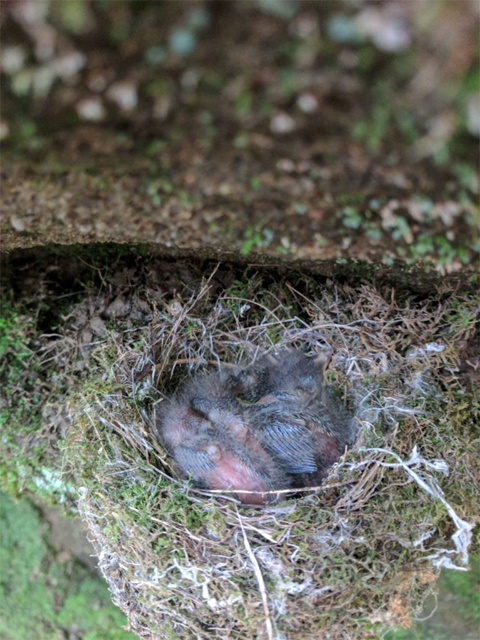
Eastern phoebe bird nest.
The second half of our day was spent with the Wayne’s forest botanist, Jeff Rebitzke, visiting sites of known sensitive species such as the umbrella tree (Magnolia tripetala), with the hope of updating the data points. Going into this there were only three Magnolias marked, and we were very pleased to find nearly 50 healthy specimens in the area. Magnolia tripetala is one of the sensitive species we hope to find in the Athens section of the Wayne.
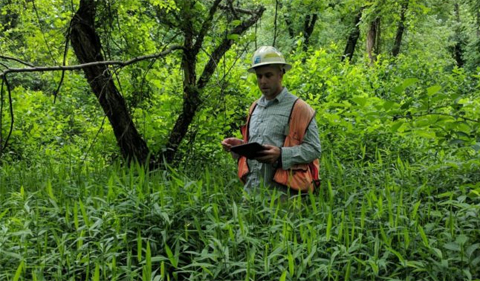
Jeff Rebitzke in a sea of grass.
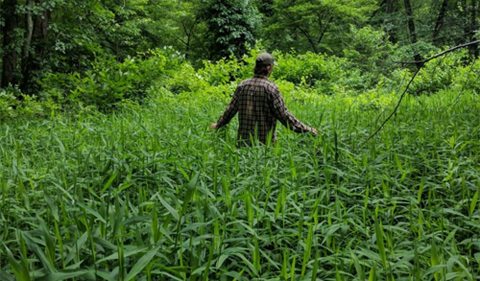
Trevor Somogyi swimming in a sea of grass.
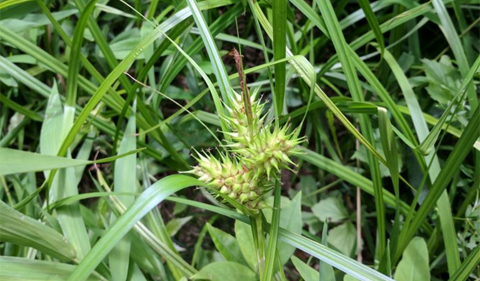
A possible candidate for the Louisiana sedge.
In addition to our search for Magnolia tripetala, we were also searching for the elusive Louisiana sedge (Carex louisianica) and the giant sedge (Carex gigantea). These sedges are difficult to identify with several other species looking almost identical to them. We gathered a few samples to take back to our dissecting scopes in order to be certain, but unfortunately none of them proved to be what we were looking for. This is oftentimes the case when doing survey work, especially with the difficult Carex genus, but we remain optimistic and enthusiastic.
We’re very excited to continue to share our experiences with you all and look forward to more adventures in the wonderful world of the Wayne.
– Trevor and Emily



















Comments